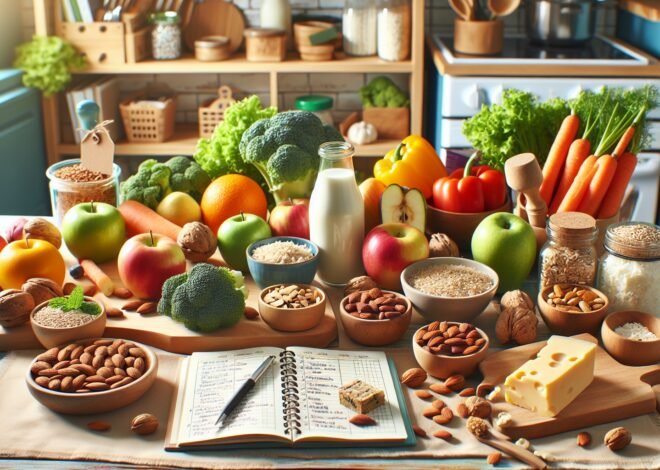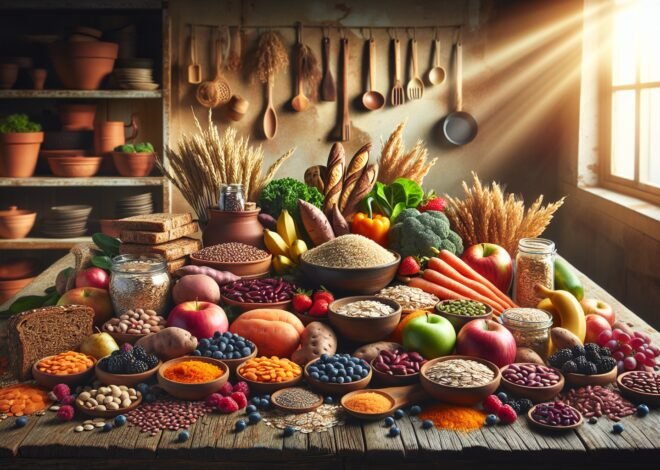
Top 20 Paleo Diet Tips for Beginners
The Paleo diet is inspired by the dietary patterns of our ancestors and focuses on consuming whole, unprocessed foods. It emphasizes lean proteins, vegetables, fruits, nuts, and seeds while eliminating processed foods, grains, legumes, and dairy. Here are 20 tips to help beginners get started with the Paleo diet.

1. Focus on Whole, Unprocessed Foods
The foundation of the Paleo diet is eating whole, natural foods that are free from additives, preservatives, and artificial ingredients. Prioritize fresh vegetables, fruits, lean meats, seafood, and nuts.
2. Avoid Processed Foods
Stay away from processed and packaged foods that contain refined sugars, artificial additives, and unhealthy fats. The Paleo diet encourages a return to simple, whole-food nutrition.
3. Choose Grass-Fed and Pasture-Raised Meat
Whenever possible, select grass-fed, pasture-raised, or organic meats. These options are higher in omega-3 fatty acids and are more aligned with the diet’s principles.
4. Eat Plenty of Vegetables
Vegetables are a staple of the Paleo diet, providing essential vitamins, minerals, and fiber. Include a variety of colors and types in your meals to ensure a wide range of nutrients.
5. Incorporate Healthy Fats
The Paleo diet allows for the consumption of healthy fats such as olive oil, coconut oil, avocado oil, nuts, and seeds. These fats provide energy and support overall health.
6. Limit Fruit Intake
While fruits are allowed on the Paleo diet, they should be consumed in moderation, especially if you are aiming for weight loss. Focus on low-sugar fruits like berries, apples, and citrus.
7. Avoid Grains and Legumes
Grains (such as wheat, rice, and oats) and legumes (like beans, lentils, and peanuts) are not considered part of the Paleo diet due to their potential impact on digestion and inflammation.
8. Eliminate Dairy Products
The Paleo diet does not include dairy, as it is believed that our ancestors did not consume milk or cheese. Replace dairy with non-dairy alternatives like almond milk or coconut cream.
9. Be Mindful of Sweeteners
Avoid refined sugars, artificial sweeteners, and even natural sweeteners like honey and maple syrup in large amounts. When needed, use them sparingly.
10. Use Herbs and Spices for Flavor
Enhance the flavor of your meals with herbs and spices such as garlic, turmeric, basil, and rosemary. They add depth to dishes without relying on processed condiments.
11. Snack on Nuts and Seeds
Keep Paleo-friendly snacks like nuts, seeds, or dried fruit on hand for quick, healthy snacks. Be mindful of portion sizes, as nuts and seeds are calorie-dense.
12. Include Fish and Seafood
Incorporate fish and seafood into your diet regularly. Fatty fish like salmon, mackerel, and sardines provide essential omega-3 fatty acids that support heart health.
13. Drink Water and Herbal Teas
Stay hydrated with water and herbal teas, which are the primary beverage choices on the Paleo diet. Avoid sugary drinks, sodas, and processed juices.
14. Prepare Meals at Home
Cooking your meals at home ensures that you know exactly what ingredients are being used. This helps you stay true to the Paleo principles and avoid hidden additives.
15. Read Food Labels Carefully
When buying packaged foods like nuts, seeds, or dried fruits, read labels to check for added sugars, preservatives, or non-Paleo ingredients.
16. Plan Your Meals Ahead
Meal planning and preparation can help you stay on track with the Paleo diet. Create a weekly meal plan and prepare ingredients in advance to make healthy eating more convenient.
17. Limit Alcohol Consumption
Alcohol is not considered Paleo, but if you choose to drink, opt for natural wine or spirits without added sugars. Drink in moderation to stay aligned with your health goals.
18. Listen to Your Body
Pay attention to how your body feels on the Paleo diet. If certain foods don’t agree with you, adjust your eating plan accordingly. The diet should be tailored to meet your individual needs.
19. Don’t Worry About Perfection
The Paleo diet is flexible, and it’s okay to make occasional exceptions. Focus on progress rather than perfection, and aim to eat whole, unprocessed foods most of the time.
20. Educate Yourself About Paleo Principles
Learn more about the science behind the Paleo diet and the benefits of whole foods. Understanding the reasons for the guidelines can help you stay motivated and committed.
Conclusion
The Paleo diet encourages eating nutrient-dense, whole foods that align with our ancestral eating patterns. By following these 20 tips, you can adopt the diet safely and effectively, enjoy a variety of delicious meals, and support your health and wellness goals. Focus on fresh vegetables, lean proteins, healthy fats, and simple preparation to make the most of your Paleo journey.
FAQ: Paleo Diet Tips for Beginners
1. What is the Paleo diet?
The Paleo diet, also known as the Paleolithic or “caveman” diet, focuses on eating whole, unprocessed foods that our ancestors would have consumed. It emphasizes lean meats, fish, vegetables, fruits, nuts, and seeds while avoiding processed foods, grains, legumes, dairy, and refined sugars.
2. Can I eat fruits on the Paleo diet?
Yes, fruits are allowed on the Paleo diet, but they should be consumed in moderation, especially if you’re trying to lose weight. Focus on low-sugar fruits like berries, apples, and citrus, rather than higher-sugar fruits like bananas and grapes.
3. Why are grains and legumes excluded from the Paleo diet?
Grains and legumes are excluded because they contain anti-nutrients like lectins and phytic acid, which can interfere with nutrient absorption and digestion. The Paleo diet encourages the consumption of foods believed to be more easily digestible and nutrient-dense.
4. Is dairy allowed on the Paleo diet?
Traditional Paleo guidelines exclude dairy because it’s believed that our ancestors did not consume it. However, some people follow a modified version of the diet that includes certain dairy products, like ghee or grass-fed butter, which are less likely to cause digestive issues.
5. Can I drink alcohol on the Paleo diet?
Alcohol is not considered Paleo, but if you choose to drink, opt for natural wine, cider, or spirits like whiskey, vodka, or tequila without added sugars. Limit consumption to stay aligned with your health goals.
6. How can I get enough calcium without dairy?
Calcium can be obtained from non-dairy sources such as leafy greens (kale, spinach), nuts (almonds), seeds (chia, sesame), fish with bones (sardines, salmon), and fortified non-dairy milk alternatives like almond or coconut milk.











